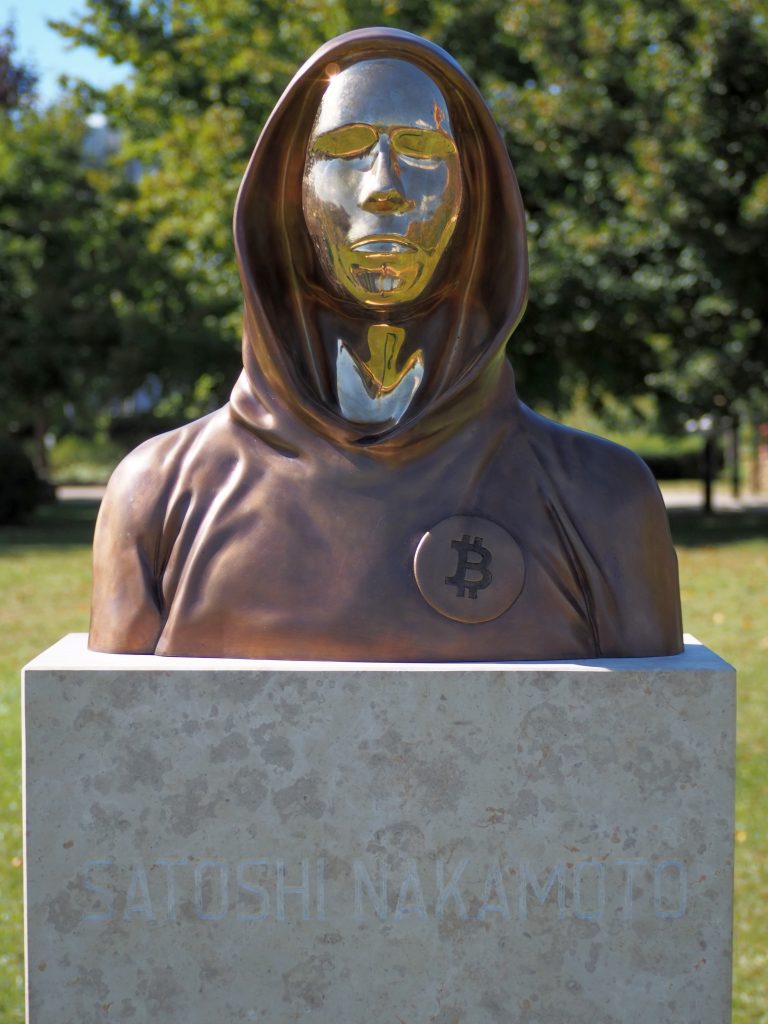Bitcoin has undoubtedly transformed the global financial landscape since its introduction, revolutionizing how we perceive money and conduct transactions. At the heart of this groundbreaking digital currency lies a puzzling figure: Satoshi Nakamoto, the mastermind behind Bitcoin. As time passes, the enigma surrounding their identity only grows, giving rise to a multitude of theories and conjectures. In this article, we will delve into the captivating world of Satoshi Nakamoto. We will be examining the significance of their ingenious invention and exploring the various possibilities behind their true identity.
The Bitcoin White Paper and Early Communications


On the 31st of October, 2008, an individual using the pseudonym Satoshi Nakamoto published a white paper titled “Bitcoin: A Peer-to-Peer Electronic Cash System.” This seminal document laid out the groundwork for a decentralized, secure, and transparent digital currency, which would eventually be known as Bitcoin. The white paper introduced the concept of blockchain—a public ledger where all transactions are recorded—enabling a decentralized and trustless financial system.
In the early days of Bitcoin, Satoshi Nakamoto played an active role in the currency’s development and promotion, participating in online forum discussions, offering support, and collaborating with other developers. However, in April 2011, Nakamoto sent a final message to a fellow developer, stating that they were moving on to other projects. From that point on, their online presence vanished, leaving the Bitcoin community with numerous unanswered questions and a lasting fascination with the enigmatic creator’s identity.
Throughout their communications, Satoshi maintained a high level of discretion, disclosing very little about their personal life or background. This has only added fuel to the fire of speculation and intrigue as people attempt to uncover the individual or group concealed behind the pseudonym.
Theories and Speculations of Who is Satoshi Nakamoto


The search for Satoshi Nakamoto’s true identity has led to several theories and speculations. We will now explore some of the most prominent names and groups linked to the mysterious Bitcoin creator.
Nick Szabo
Nick Szabo, a computer scientist and cryptographer, is often considered a potential candidate for Satoshi Nakamoto. Szabo’s work on digital currencies, specifically his development of “bit gold” in the late 1990s, predates the Bitcoin white paper. Additionally, his expertise in digital contracts and cryptography closely align with the skills required to create Bitcoin. However, despite these connections, Szabo has consistently denied any involvement in the creation of Bitcoin.
Dorian Nakamoto
In 2014, Newsweek published an article suggesting that Dorian Nakamoto, a Japanese-American man living in California, was the real Satoshi. This claim was primarily based on the coincidence of Dorian’s birth name, “Satoshi Nakamoto,” and his background in engineering. However, Dorian publicly denied any involvement with Bitcoin, claiming he had never even heard of the cryptocurrency before the Newsweek article. The Bitcoin community largely dismissed this theory due to the lack of substantial evidence.
Craig Wright
Australian entrepreneur Craig Wright has been one of the most controversial figures claiming to be Satoshi Nakamoto. In 2016, Wright announced that he was the creator of Bitcoin, but his evidence was met with skepticism from the community. Critics pointed out inconsistencies in Wright’s story and argued that the cryptographic proof he provided was insufficient. Since then, Wright has been embroiled in multiple legal battles related to his claims, further casting doubt on his assertion.
Hal Finney
Hal Finney, a computer scientist and an early contributor to Bitcoin, is another name frequently associated with Satoshi Nakamoto. Finney was the recipient of the first-ever Bitcoin transaction, which came from Nakamoto’s wallet. He also corresponded with Nakamoto and actively participated in Bitcoin’s development. Despite these connections, Finney denied being Satoshi, and there is no definitive proof linking him to the pseudonym.
Linus Torvalds
Linus Torvalds, the creator of the Linux operating system, has also been mentioned as a possible Satoshi Nakamoto. This theory is based on Torvalds’ exceptional programming skills and the similarities between Bitcoin and Linux’s decentralized development approach. Intriguingly, a line of code was discovered in the Linux kernel stating “I am Satoshi,” further fueling speculation. However, Torvalds has denied any involvement with Bitcoin and has shown little interest in the cryptocurrency space.
Steve Jobs
A more obscure theory suggests that the late Steve Jobs, co-founder of Apple Inc., could be Satoshi Nakamoto. This idea is primarily fueled by the discovery of the Bitcoin white paper on macOS devices, though no concrete evidence supports this claim. Additionally, given Jobs’ passing in 2011, he would have been unable to deny or confirm his involvement.
Elon Musk
Lastly, SpaceX and Tesla CEO Elon Musk has also been the subject of speculation regarding Satoshi Nakamoto’s identity. Musk’s innovative mindset and his numerous ventures in technology make him a seemingly plausible candidate. However, Musk has repeatedly denied any connection to the creation of Bitcoin, stating in a tweet, “Not true. A friend sent me part of a BTC a few years [ago], but I don’t know where it is.”
Clues and Anomalies in Nakamoto’s Communications


Nakamoto’s communications offer intriguing clues and anomalies that may help identify the true creator of Bitcoin. For example:
- Time stamps on posts and emails
- British/Commonwealth spelling and linguistic quirks
Satoshi Nakamoto’s online activity provides some intriguing clues about their identity, though none are conclusive. One aspect that has sparked curiosity is the time stamps on Nakamoto’s forum posts and emails.
- Time stamps: The majority of Nakamoto’s posts and emails were sent during specific hours that suggest they may have been located in the Americas. However, this could also be a deliberate attempt to mislead or simply the result of working nontraditional hours.
- British/Commonwealth spelling and linguistic quirks: Nakamoto’s use of British/Commonwealth English spelling and expressions, such as “colour” and “bloody hard,” has led some to speculate that they may be from the United Kingdom or a Commonwealth country. Alternatively, this could be another attempt to obscure their true identity or the result of an international education.
These clues, while intriguing, remain inconclusive and only serve to deepen the mystery surrounding Satoshi Nakamoto’s true identity.
The Mysterious Bitcoin Fortune
One of the most fascinating aspects of the Satoshi Nakamoto mystery is the fortune in Bitcoin attributed to the creator’s wallets. It is estimated that Nakamoto’s wallets hold around 1 million bitcoins, valued at billions of dollars at current prices. Intriguingly, these coins have remained untouched since the early days of Bitcoin, raising questions about the creator’s motives and intentions.
The fact that this fortune remains unclaimed adds to the enigma surrounding Satoshi Nakamoto’s identity. Some believe that the creator may have lost access to the private keys, while others theorize that the creator may be waiting for the right moment to use or reveal the Bitcoin fortune. The untouched fortune adds another layer of complexity to the ongoing search for the true identity of Satoshi Nakamoto.
The Impact of Satoshi Nakamoto’s Anonymity on Bitcoin and the Crypto Space


Satoshi Nakamoto’s anonymity has had a profound effect on the development of Bitcoin and the wider cryptocurrency ecosystem. On one hand, this anonymity has allowed Bitcoin to flourish as a decentralized and trustless system. Its free from the influence of a central authority or figurehead! This lack of central control is a core tenet of the cryptocurrency’s design and has contributed to its widespread adoption.
On the other hand, Nakamoto’s anonymity has also led to a degree of uncertainty and speculation that may have hindered the mainstream acceptance of Bitcoin in its early years. The mysterious origins of the cryptocurrency have fueled skepticism and criticism from some quarters, while also attracting the attention of conspiracy theorists and cybercriminals.
Regardless of these challenges, the anonymity of Bitcoin’s creator has undeniably shaped the course of the cryptocurrency movement, creating a lasting legacy that continues to influence the development of new technologies and innovations within the crypto space.
Conclusion
The quest to uncover the true identity of Satoshi Nakamoto has captivated the imagination of the cryptocurrency community and beyond for over a decade. While numerous theories, clues, and speculations have been explored, no definitive answer has emerged, and the enigmatic figure remains shrouded in mystery.
In the end, the identity of Satoshi Nakamoto may be less important than the groundbreaking technology they introduced to the world. Regardless of who the creator truly is, Bitcoin has left an indelible mark on the financial landscape and has paved the way for a new era of decentralized digital currencies.









